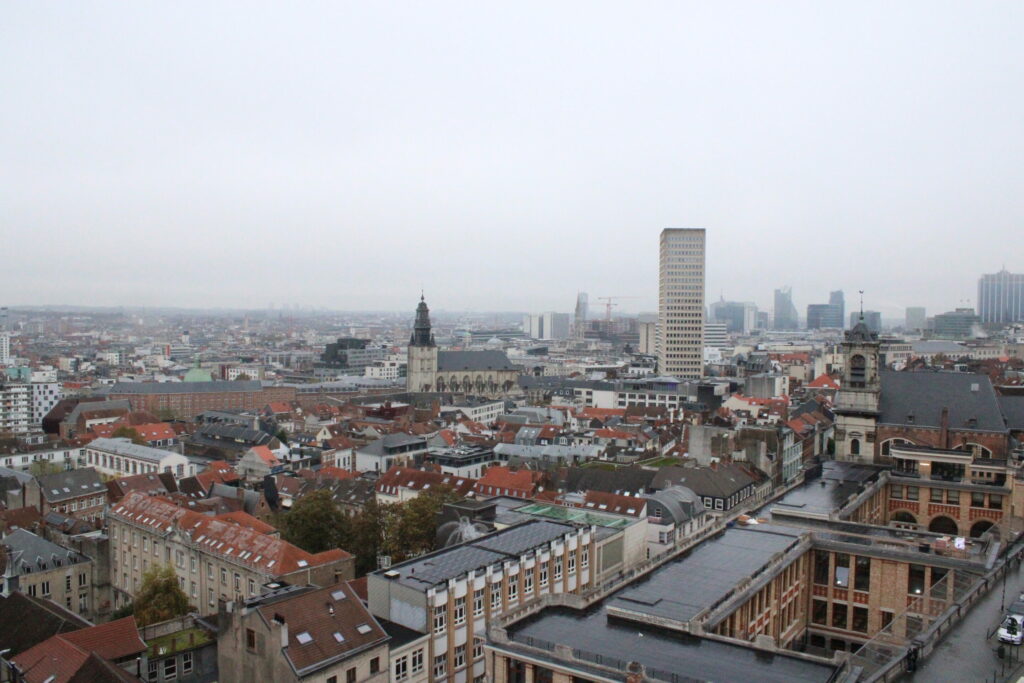Rising property prices and sky-high interest rates have slashed property purchasing power (the living space buyers can afford) in recent years. This has impacted Brussels communes differently, with some seeing moderate drops and others more substantial.
The property purchasing power in Belgium has fallen by 16 square metres (m2) in the past two years, a study by real estate platform Immoweb showed. The figure dropped from 121 m2 in January 2022, the beginning of the rise in interest rates, to 105 m2 in January 2024, when interest rates peaked.
The decline is due to a combination of three main factors. Firstly, "the 2.4 percentage point rise in interest rates was the factor with the biggest impact on purchasing power," Immoweb noted. This phenomenon contributed to purchasing power decreasing by 24 m2.
A second element which negatively impacted purchasing power was the 4.8% average rise in property prices, resulting in a further decrease of 5 m2 in purchasable area. During the same period, household incomes rose by 12.7% as a result of Belgium's automatic wage indexation system, partially offsetting the loss of purchasing power by 13 m2. This brings the total figure to 16 m2 of space lost.
However, interest rates falling to 3.13% has seen purchasing power in Belgium rise again. "Belgian households gained 5 m2 on average, bringing their total living space to 110 m2 in November," Immoweb said. This first recovery "demonstrates the direct impact" of the European Central Bank's (ECB) monetary policy on the property market and the borrowing capacity of households.
How was Brussels affected?
Purchasing power has fallen across Belgium, but losses in purchasing power differ from region to region. "While interest rates and incomes moved similarly from municipality to municipality, property prices have very different trajectories."
Brussels saw the smallest decrease, partly because of stable house prices. These increased by 2.5% between January 2022 and 2024, compared to 5.8% in Flanders and 3.6% in Wallonia.
However, the living space which households can afford in Brussels remains by far the smallest. This is due to Brussels being the most expensive region in Belgium – with the average price per m² at €3,340 – and due to the lower income (around €35,000, about €10,000 below other regions).
Purchasing power in the Brussels-Capital Region fell by 11.5%, from 65 m2 to 58 m2. With the drop in interest rates, purchasing power recovered to 61 m2 in November. Wallonia saw an average fall of 12.4%, from 162 m2 to 142 m2, before a recovery to 148 m2 in November. Flanders recorded the largest decline over the period (-14.2%), from 118 m2 to 101 m2. In November, this recovered slightly to 105 m2.
There are also differences within the Brussels-Capital Region itself. The commune of Saint-Gilles experienced the most moderate fall in purchasing power, from 55 m2 to 50 m2 (-9.7%). The figure stood at 52 m2 in November – the lowest purchasing power in the region.
Ixelles and Etterbeek also recorded notably low purchasing powers in November, at 55 m2 and 56 m2, respectively. This is mainly due to the high property prices: the average price per m² is €4,200 in Ixelles and €3,900 in Etterbeek.
In contrast, Molenbeek-Saint-Jean was the hardest hit, with a 14.1% drop between January 2022 and 2024. The figure here went from 78 m2 to 67 m2 before recovering to 61 m2. Koekelberg was also badly hit: the purchasing power here went from 81 m2 in January 2022 to 70 m2 at the start of this year, before climbing to 74 m2 in November.
Berchem-Sainte-Agathe was the third worst-affected municipality – a 13.6% drop from 91 m2 to 79 m2 – but it still has the highest purchasing power in Brussels (83 m2 in November).

